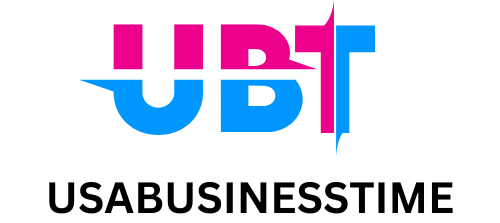Date codes like “220614” are often used in modern systems, but decoding them can be confusing without understanding the underlying format. “220614” follows the YYMMDD structure, a compressed date format that represents specific calendar dates in a minimalistic way. This format is widely used in industries such as manufacturing, data management, and global logistics for its efficiency and consistency. But how do you convert a code like “220614” into a readable calendar date, and why is this format so useful? This article will explain everything you need to know, making it easy to interpret these date codes and apply them effectively.
Table of Contents
What is the 220614 Format? Basics of YYMMDD Date Representation
The “220614” format follows the YYMMDD system, where each pair of digits represents a part of the date. In this case:
- YY stands for the year, with “22” representing the year 2022.
- MM represents the month, with “06” standing for June.
- DD represents the day of the month, with “14” indicating the 14th day.
This format is compact and designed for situations where space is limited, or a standardized approach to date representation is needed. It is especially popular in environments where quick, uniform data processing is key, such as in inventory tracking, manufacturing, or international data management.
The use of two digits for the year (YY) simplifies the date but also introduces potential challenges, such as confusion over which century the date refers to (for example, “22” could refer to either 1922 or 2022). However, in most modern systems, the context or surrounding data helps to eliminate such ambiguities.
This format is a straightforward way to record dates, making it an efficient choice for industries that require a compact, easy-to-understand system for date tracking.
Common Use Cases for the YYMMDD Format
The YYMMDD date format is used in various industries and systems due to its compact nature and ease of understanding. Here are some common applications:

- Business and Financial Records
In business operations, especially in global environments, YYMMDD simplifies the recording of dates in systems where uniformity and brevity are important. Financial transactions, inventory logs, and product batches often use this format to streamline data entry and analysis. - Manufacturing and Logistics
Manufacturers and logistics companies often use the YYMMDD format for labeling production dates, shipment dates, and expiration dates. The format’s simplicity makes it quick to read and easy to track, whether on a warehouse label or a product packaging. - Global Data Management
As different regions use varying date formats (DD/MM/YY vs. MM/DD/YY), the YYMMDD format minimizes confusion when managing data across multiple time zones and countries. The standardized order reduces the risk of misinterpreting dates, particularly in international databases. - Software Development
Developers often use this format in coding and timestamps. The YYYYMMDD format (or a shortened version like YYMMDD) helps ensure dates are stored in a way that can be sorted chronologically, which is useful when developing apps or systems that need to organize large volumes of date-sensitive data. - Documentation and Filing
Many filing systems, especially in government and legal sectors, use the YYMMDD format to sort documents. This makes it easier to file, retrieve, and track documents over time without ambiguity. - Aviation and Military
In aviation and military applications, date codes like YYMMDD are used to mark aircraft maintenance logs, mission timelines, and other critical data where space on paper or digital records is limited. This standardized format reduces room for error in date interpretation.
The simplicity of the YYMMDD format makes it useful in a variety of contexts where space is limited, or speed and accuracy are necessary for organizing and managing time-sensitive data.
Why Accurate Date Conversion Matters
Accurate date conversion is important for several reasons, particularly in settings where dates are integral to organizing data, coordinating activities, or tracking processes. Here are some key reasons why getting the conversion right is so important:
- Avoiding Confusion in Records
Incorrect date conversion can lead to confusion in records, particularly when dealing with time-sensitive information. For example, mixing up dates in a financial report or shipment schedule can result in delays or miscommunications that affect business operations. The YYMMDD format helps maintain uniformity, reducing the chances of errors. - Ensuring Proper Scheduling and Deadlines
In fields such as manufacturing or project management, adhering to precise deadlines is essential. A small error in date conversion can lead to missed deadlines, delayed shipments, or improper planning, which can have cascading effects on an entire project or operation. - Improved Data Analysis
In data analysis, accurate date conversion is necessary for organizing datasets chronologically. Incorrect date formatting can cause data to be recorded out of order, making trends and insights harder to identify. Having consistent, accurate date formats in data sets is essential for drawing valid conclusions and making informed decisions. - Consistency Across Systems
Different systems may use different date formats, but maintaining consistency across platforms is key for seamless data sharing and integration. When converting date codes like “220614” to a calendar date, standardization across systems helps ensure that data remains synchronized, minimizing discrepancies and improving workflow. - Legal and Compliance Issues
In regulated industries, incorrect date records can lead to legal and compliance issues. Contracts, legal documents, and government filings often require precise dates. An error in the conversion or interpretation of these dates could result in missed deadlines for filings or compliance violations, which could lead to financial penalties or legal repercussions. - Global Coordination
As organizations and businesses expand across countries, accurate date conversion becomes more important. Different countries may have different conventions for date formats, so errors can lead to misunderstanding across time zones. Using formats like YYMMDD, which are globally recognized, reduces the risk of confusion in international communication and planning.
Accurate date conversion, therefore, plays a key role in facilitating smooth operations, protecting legal interests, and supporting effective global coordination. Whether for data analysis, scheduling, or regulatory compliance, ensuring the proper conversion of date codes like “220614” is a fundamental part of modern business operations.
Step-by-Step Guide: Converting 220614 to a Calendar Date
Converting a date code like “220614” into a readable calendar date is straightforward if you follow these steps:
- Identify the Year (YY)
The first two digits, “22,” represent the year. In this case, “22” stands for 2022. The format uses a two-digit year, so it is important to consider the context to determine the century. While this code represents the year 2022, in other contexts, the year could potentially be 1922. Modern systems typically assume the 21st century (2000s) when using “22.” - Extract the Month (MM)
The next two digits, “06,” represent the month. In this case, “06” corresponds to June. The month is always represented by two digits, so months from January to September are represented as “01” to “09” for consistency. - Identify the Day (DD)
The last two digits, “14,” represent the day of the month. In this example, “14” is the 14th day of June. The day is always a two-digit number, ranging from “01” to “31,” depending on the month. - Construct the Calendar Date
Once you have identified the year, month, and day, you can now format them into a standard calendar date. The result of converting “220614” would be “June 14, 2022.”
By following this simple process, you can convert any YYMMDD date code to its corresponding calendar date.
Challenges and Common Mistakes in Date Format Conversion
Converting date codes like “220614” to calendar dates is generally simple, but there are several challenges and common mistakes people may encounter. These can cause confusion or errors in various contexts:

- Misinterpretation of the Year
The two-digit year format (YY) can lead to confusion. Without proper context, it’s easy to mistake “22” for a different century, such as 1922 instead of 2022. This error is especially problematic in long-term planning or historical data, where distinguishing between decades or centuries is crucial. Systems or practices that don’t specify the century can make this error more likely. - Inconsistent Date Formats
The YYMMDD format may not be universally understood, especially when working across regions or industries that use other formats (e.g., DD/MM/YY or MM/DD/YY). This inconsistency can lead to the wrong date being recorded or misinterpreted, particularly in international contexts. Ensuring everyone involved in data entry or conversion follows the same format is key to avoiding such mistakes. - Confusion with Leading Zeros
In the YYMMDD format, months and days are always two digits, so “06” represents June, not just “6.” However, in informal use or when the format isn’t clearly specified, leading zeros can be omitted or misread. This may not be an issue for automated systems, but it can cause confusion when manually entering or interpreting dates. - Leap Year and Month-Length Considerations
Another challenge arises from not accounting for the number of days in a month, especially when dealing with dates at the end of a month (e.g., “220230” could be misinterpreted as February 30th). Similarly, leap years can create issues for February. Automated tools and systems need to account for these variations to avoid errors in date conversion. - Time Zone Differences
While the YYMMDD format itself doesn’t inherently deal with time zones, converting these dates into localized calendar dates may lead to errors. If the conversion system doesn’t take time zone differences into account, a date might appear incorrectly based on the region. For example, “220614” could represent June 14, 2022, in one time zone but a day earlier or later in another zone. - Software and System Limitations
Not all software systems are equipped to handle or convert date codes efficiently. Some systems may fail to interpret the date properly if the format is not recognized or if the system isn’t designed to handle date codes. Additionally, when dealing with large datasets, batch conversion errors can lead to widespread date misinterpretation.
Being aware of these challenges and potential mistakes can help reduce errors when converting “220614” and similar date codes. Taking the time to double-check the context, formatting, and tools being used can make the process more reliable and prevent costly misunderstandings.
Technological Tools for Converting “220614” to Calendar Date
Several tools and technologies can help convert date codes like “220614” into readable calendar dates, making the process faster and more accurate. Here are some common tools used for this purpose:
- Online Date Converters
There are various free online tools specifically designed to convert date codes. These tools typically allow users to input a YYMMDD code and instantly generate the corresponding calendar date. They are easy to use and provide quick results, making them ideal for individuals or small businesses needing occasional conversions. - Spreadsheet Software
Programs like Microsoft Excel and Google Sheets have built-in date functions that can be adapted to convert date codes. By using formulas, users can extract the year, month, and day from a YYMMDD code and convert it into a fully formatted calendar date. For example, an Excel formula could parse the individual components and output the date in a preferred format (e.g., “6/14/2022”). - Custom Scripts and Automation
For businesses with high-volume date code conversions, custom scripts can automate the process. Scripting languages like Python or JavaScript can be used to write scripts that automatically convert a YYMMDD code into a calendar date, ensuring consistency across large datasets. These scripts can be integrated into databases or data management systems for seamless conversions. - Database Management Systems
Many modern database management systems (DBMS) offer date conversion functions. For example, SQL queries can be written to handle date code conversions when importing or exporting data. This is particularly useful when dealing with large-scale data migration or integration, as automated systems can handle the conversions behind the scenes. - Mobile Apps
Several mobile applications can convert date codes while on the go. These apps provide an easy interface for users to input YYMMDD codes and see the calendar date instantly. These are useful for professionals working in industries that require frequent date code conversions while traveling or in the field. - Integrated Software Solutions
Many industry-specific software packages, especially in logistics, finance, and manufacturing, offer built-in date conversion features. These systems automatically convert date codes to a readable format based on preset rules and context, minimizing human error and saving time during data processing or reporting tasks.
By using the right technological tools, individuals and businesses can avoid manual errors, increase efficiency, and save time when converting “220614” and similar date codes. These solutions are particularly helpful for large-scale or repeated conversions, ensuring that date information is consistently accurate and formatted properly across all systems.
The Future of Date Conversions
The way we handle date formats, particularly date codes like “220614,” is evolving alongside technological advances and growing global interconnectedness. As the need for consistent and accurate date conversions becomes more prominent, several trends and developments are shaping the future of how we process and manage dates:

- Increased Automation in Data Processing
As businesses continue to generate and manage massive amounts of data, automation tools are becoming more common for handling date conversions. Advanced algorithms and AI-powered systems are streamlining date-related tasks, reducing the risk of errors and improving efficiency in large-scale data processing. Automated tools will likely play a larger role in industries that rely heavily on data accuracy, such as healthcare, finance, and logistics. - Global Standardization of Date Formats
While the YYMMDD format is widely used, discrepancies still exist between countries and industries regarding date formats. In the future, we may see a movement toward standardizing date formats to avoid confusion in global communications. This shift could lead to more universal adoption of date formats like the ISO 8601 standard (YYYY-MM-DD), which is already being used by various organizations and governments around the world. - Integration with Advanced Technologies
The integration of date conversion systems with other advanced technologies, such as blockchain, machine learning, and big data analytics, will improve both the accuracy and the scope of date management. Blockchain, for example, could provide immutable records of converted dates, making it easier to track and verify historical data, especially in fields like finance or supply chain management. - User-Friendly Mobile Solutions
As mobile technology continues to advance, apps designed for date code conversions will become more user-friendly and efficient. These solutions will likely include features that can automatically detect and correct errors, offer instant conversions, and even integrate with other systems (such as calendars or scheduling apps), making it easier for professionals to manage dates on the go. - Enhanced Cross-System Compatibility
The demand for compatibility between various systems and platforms will continue to rise. As businesses use multiple software programs and cloud-based tools, seamless integration across platforms will be necessary to avoid inconsistencies in date formatting. Future systems will likely incorporate more robust date conversion tools that function across various programs, preventing misinterpretations and streamlining workflows. - Advanced Error Detection and Correction
Future date conversion systems will be smarter, incorporating machine learning models that can recognize errors in date codes and automatically suggest corrections. These systems will become better at identifying common mistakes, such as the incorrect assumption of year 1922 instead of 2022, and will offer more sophisticated tools for users to validate their data before use.
With these advancements, the way we handle date conversions will become more reliable, efficient, and accurate, significantly reducing errors and improving the global handling of time-sensitive information. As the world becomes more interconnected, date formats like YYMMDD will continue to evolve to meet the demands of a digital, data-driven world.
Conclusion
The process of converting “220614” to a calendar date is more than just a technical task—it is an essential practice in today’s data-driven world. As the demand for accurate and consistent date handling grows, understanding the methods and tools for converting date codes will be key to managing time-sensitive information effectively. The ongoing advancements in technology, from automated tools to enhanced error-checking systems, will continue to make date conversions faster and more reliable. By staying informed and utilizing the available resources, individuals and organizations can avoid costly mistakes and improve their overall efficiency in data management.











